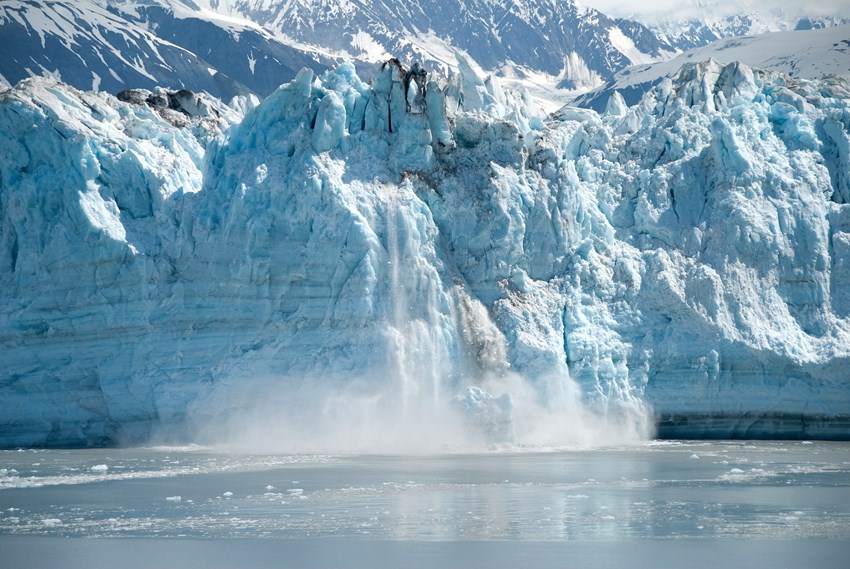University of Montana Researcher Helps Forecast Impact of Glacier Loss on North American Pacific Salmon
Forecasting the future is no easy task, especially when it comes to the impacts of climate change on our natural resources and ecosystems. However, in a new study recently published on the cover of the scientific journal BioScience, University of Montana’s Flathead Lake Biological Station (FLBS) researcher Diane Whited helped a team of researchers predict the ways North American glacier loss may impact the long-term survival of North American Pacific salmon.
Funded by the Gordon and Betty Moore Foundation via the Salmon Science Network Initiative and led by researchers from Simon Fraser University in British Columbia, Canada, the study took a conceptual look at the effects glacier retreat will have on western North American Pacific salmon over the coming decades.
“We focused specifically on glaciers in British Columbia and Alaska,” said Whited, an expert in geographic information system (GIS) and remote sensing technologies. “From there, we conceptually walked through what would happen if those glaciers continue to retreat.”
Today, eighty-five percent of major salmon watersheds in western North America have at least some glacier coverage. These glaciers have lost three percent of their ice volume per year from 2006 through 2016, and are expected to lose up to eighty percent of their ice volume by 2100. This will create significant implications for salmon habitat availability, water flows and water temperatures.
Reviewing the historical interaction of glaciation and Pacific salmon in North America over geological time scales, researchers determined that future glacier loss will create two scenarios. In southern watersheds, the loss of cold glacier meltwater during the summer months could lead to low water flows and warmer water temperatures, which would create major challenges for the survival of young and adult salmon. In the northern watersheds, however, glacier retreat may create new salmon habitat that could be similar to the southern watersheds prior to the glacier loss.
According to Whited, the odds of Pacific salmon survival or recolonization will change depending on where you look.
“Take the river basins in southern British Columbia,” Whited said. “As the glaciers recede, the water will probably heat up and be too warm to support significant salmon populations. But if you move north towards northern B.C. and Alaska, there may be ideal habitats for salmon to recolonize.”
Whited added that, while this study was conceptual, the research team is working on assembling more technical research that will attempt to quantify the amount of habitat that may be lost versus the amount of habitat that may come available.
Meanwhile, the researchers believe that understanding how glacier retreat will affect Pacific salmon will help inform the management and conservation of these economically and culturally significant species. Not only will preserving the genetic diversity and evolutionary potential of salmon be crucial in ensuring the adaptive capacity of the salmon, but it will also be essential for supporting sustainable fisheries.
They also caution that glacier retreat is adding one more pressure on salmon systems that are already stressed by climate change, habitat destruction and hatchery practices that erode salmon biodiversity.
Authors on the study include Kara Pitman and Jonathon Moore from Simon Fraser University; Matthew Sloat from the Wild Salmon Center; Anne Beaudreau and Eran Wood from the University of Alaska-Fairbanks; Allison Bidlack from the University of Alaska-Southeast; Richard Brenner from the Alaska Department of Fish and Game; George Pess and Nathan Mantua from the National Oceanic and Atmospheric Administration; Alex Milner from the University of Brimingham (UK) and University of Alaska-Fairbanks; Valenta Radic from the University of British Columbia; Gordon Reeves from the U.S. Forest Service; Daniel Schindler from the University of Washington; and Diane Whited from the University of Montana’s Flathead Lake Biological Station.
For more information, visit https://academic.oup.com/bioscience/article/70/3/220/5799047.


